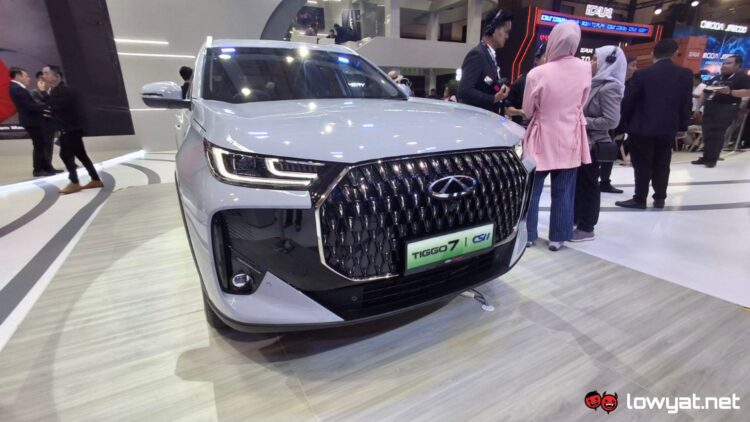While many automakers continue to chase fully electric ambitions, Chery is charting its own path with a focus on hybrids. At the Malaysia Autoshow (MAS) 2025, the Chinese automaker showcased plug-in hybrids (PHEV) versions of its Tiggo 8 and Tiggo 7 SUVs. Both vehicles are equipped with the Chinese automaker’s new Super Hybrid Platform (CSH), supported by its Direct Hybrid Transmission (DHT) system.
In terms of design, the facelifted Chery Tiggo 7 features trapezoidal LED headlamps with double-L-shaped daytime running lights and a closed-off octagonal grille, subtly showcasing a diamond pattern beneath a transparent cover. The rear features a full-width taillight bar with S-shaped elements and vertical reflectors.

Meanwhile, the Chery Tiggo 8 CSH features new design elements from the current petrol variant Tiggo 8, starting with the redesigned headlamps, a slimmer grille surround, a redesigned front bumper with functional air curtains, and flush door handles. At the rear, the look remains mostly familiar, though a new diffuser-like element adds flair.
The interior of the 7 CSH comes with a dual screen setup for both the driver’s display and infotainment system, while the Tiggo 8 has separated dual screen setup. While there is no much changed done to the former, the CSH 8 gets a rotary gear selector, centre console, and climate controls.

As for the powertrain, the Tiggo 7 features a 1.5 litre turbocharged TGDi four-cylinder engine with 143PS and 215 Nm of torque. It is paired with 204 PS and 310 Nm electric motor and a single-speed dedicated hybrid transmission (DHT). Total system output is rated at 347 PS and 525 Nm, all sent to the front wheels with a top speed of 180 km/h.
Meanwhile, the Tiggo 8 has a 1.5 litre turbocharged inline-four petrol engine producing 154HP and 220Nm of torque. Compared to the Tiggo 7, this SUV comes a three-speed Direct Hybrid Transmission (DHT) that integrates two electric motors rated at 201 hp and 310 Nm. According to Chery Malaysia, the overall system output is a mighty 347 PS and 525 Nm, with drive going to the front wheels.

As for battery, both the SUVs comes with 8.3 kWh BYD-sourced Blade lithium iron phosphate (LFP) battery, enabling both models to have a WLTP range of 1,200km. The battery takes 19 minutes to charge from 30% to 90% with a DC charger while with an AC charger it takes 3 hours. It is also capable of giving a 3.3 kWh vehicle-to-load (V2L) function.
While the price of the models is yet to be revealed, both the SUVs are expected to be launched somewhere during the second half of this year.




